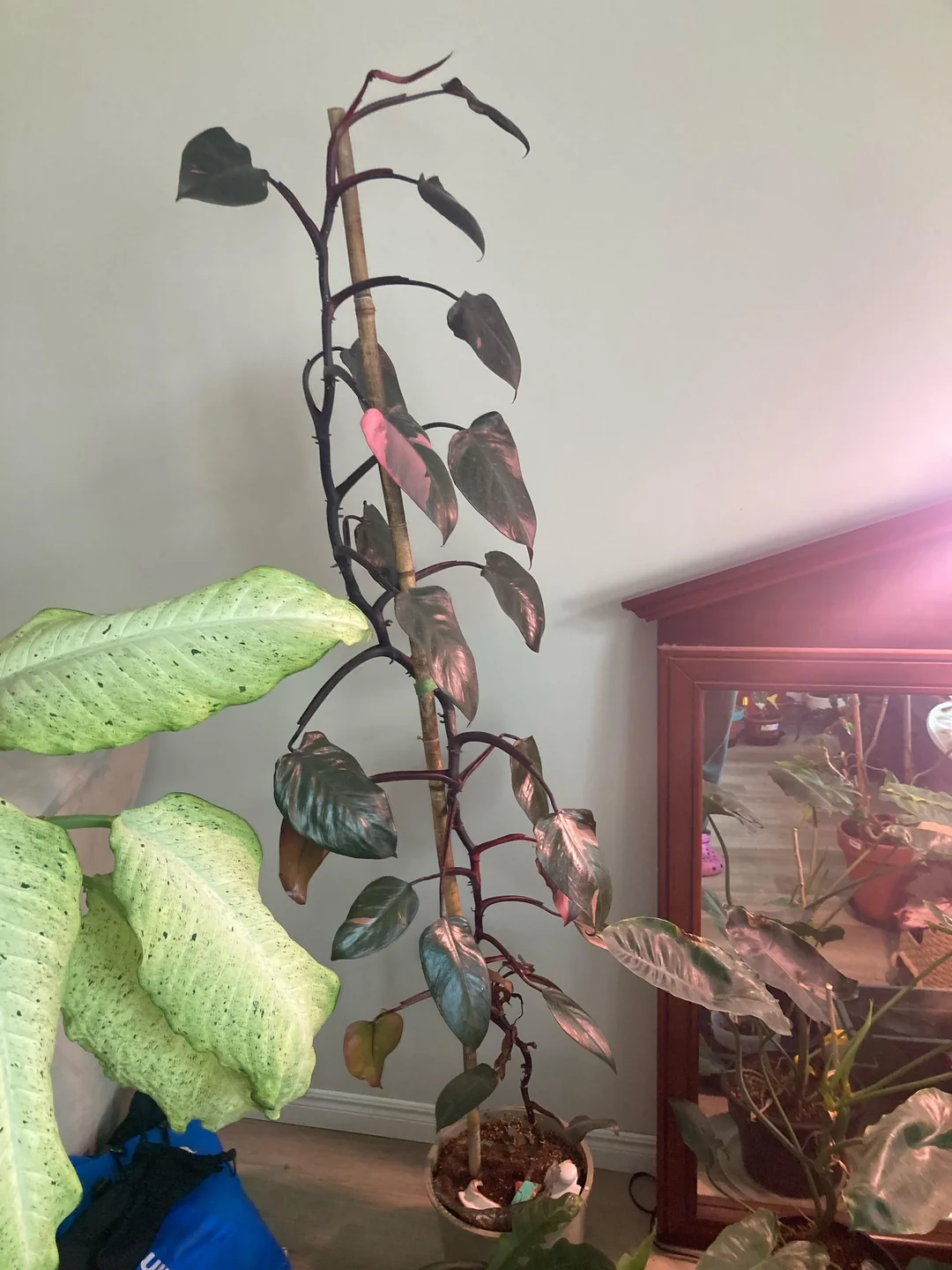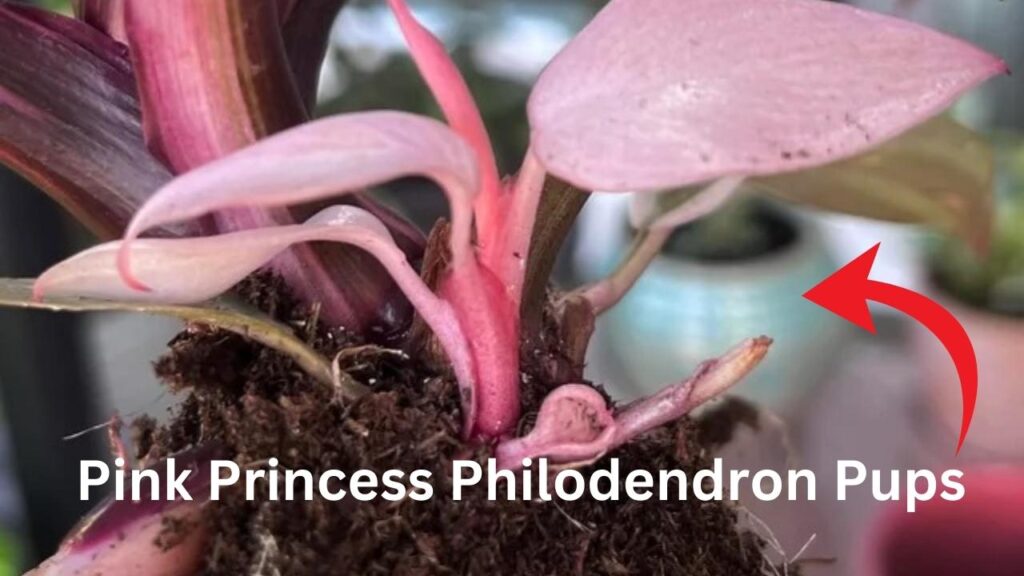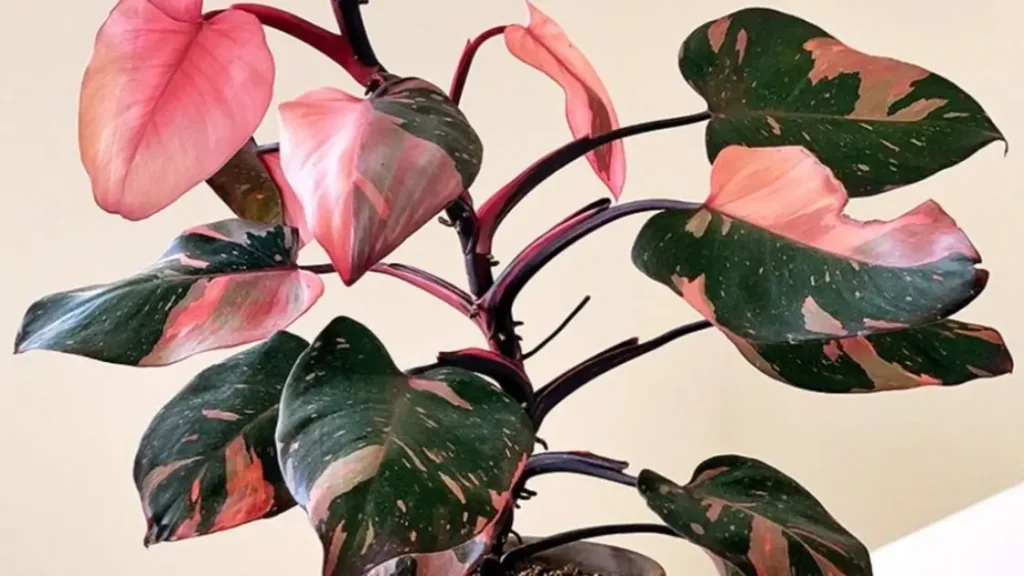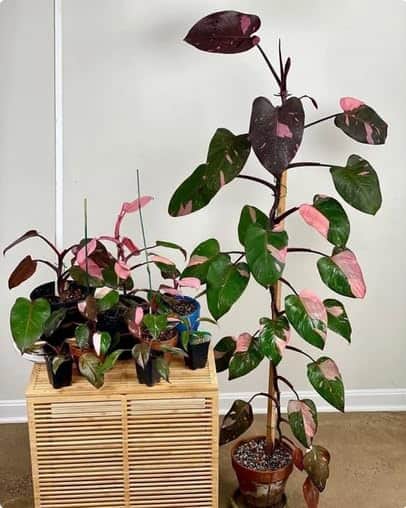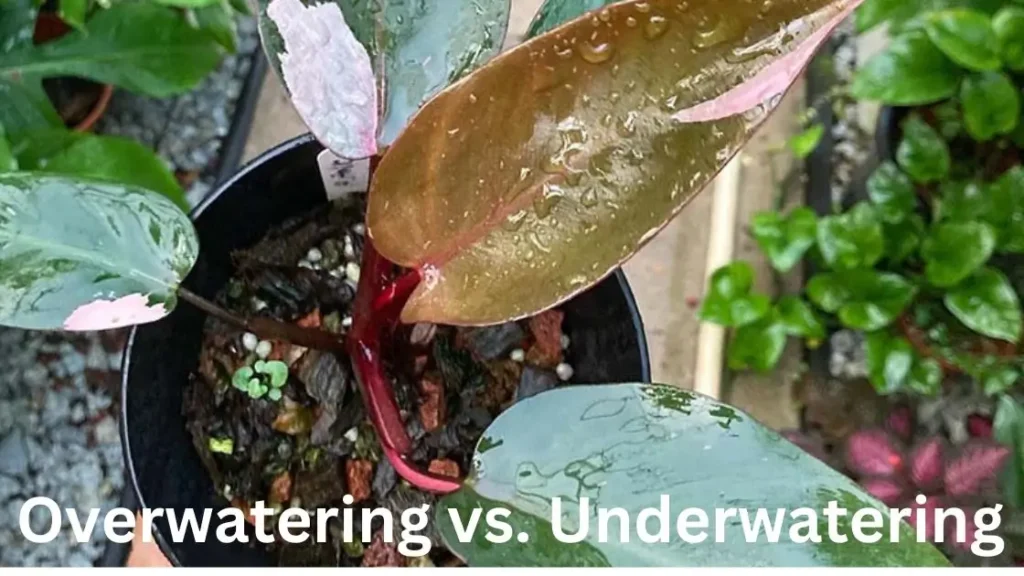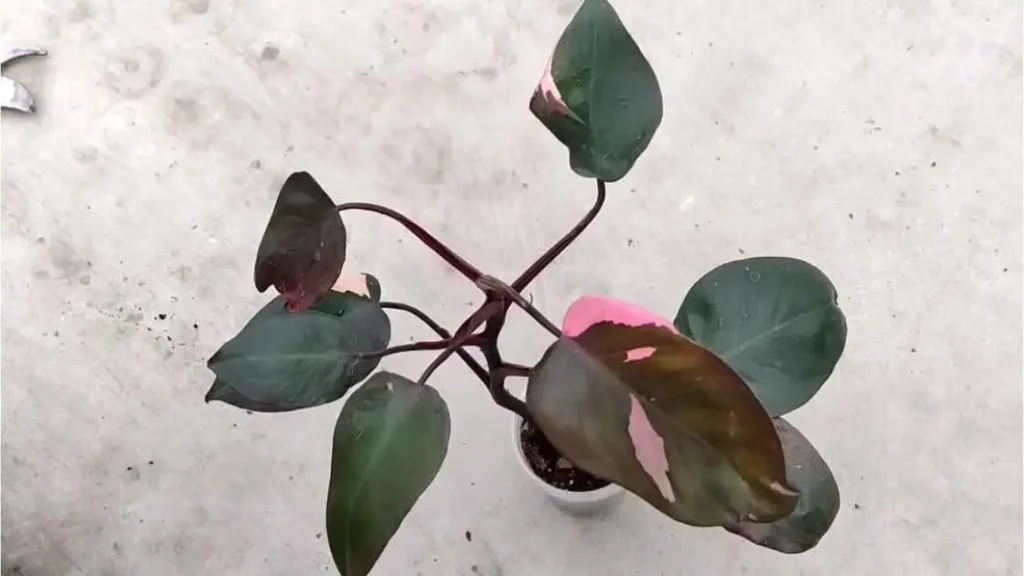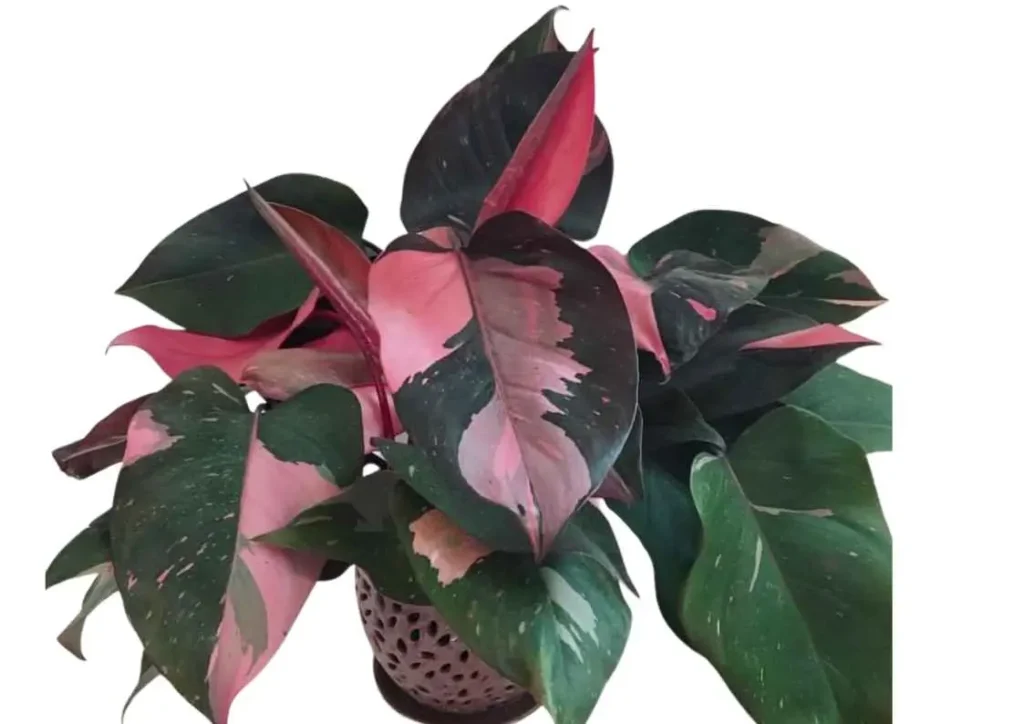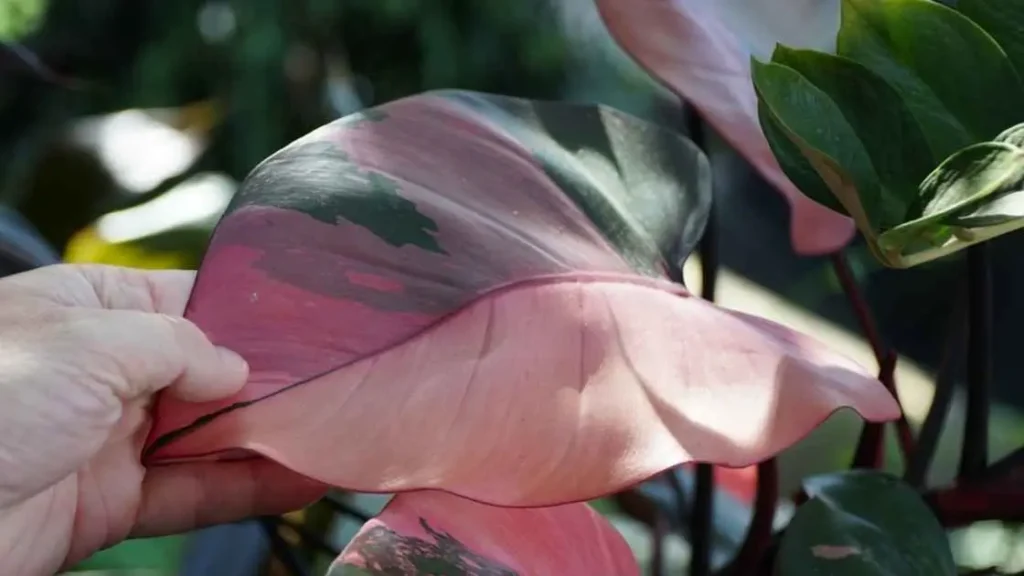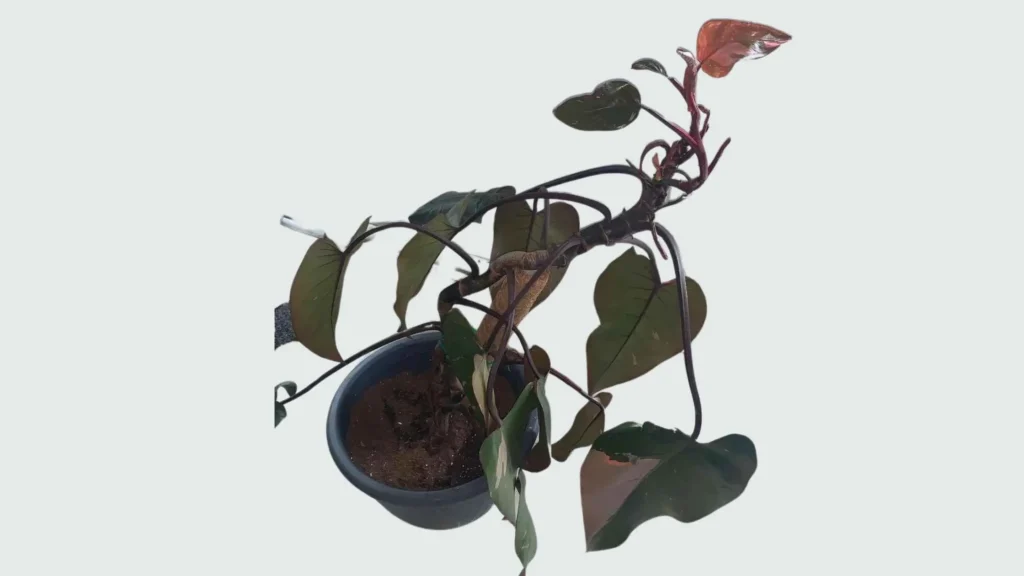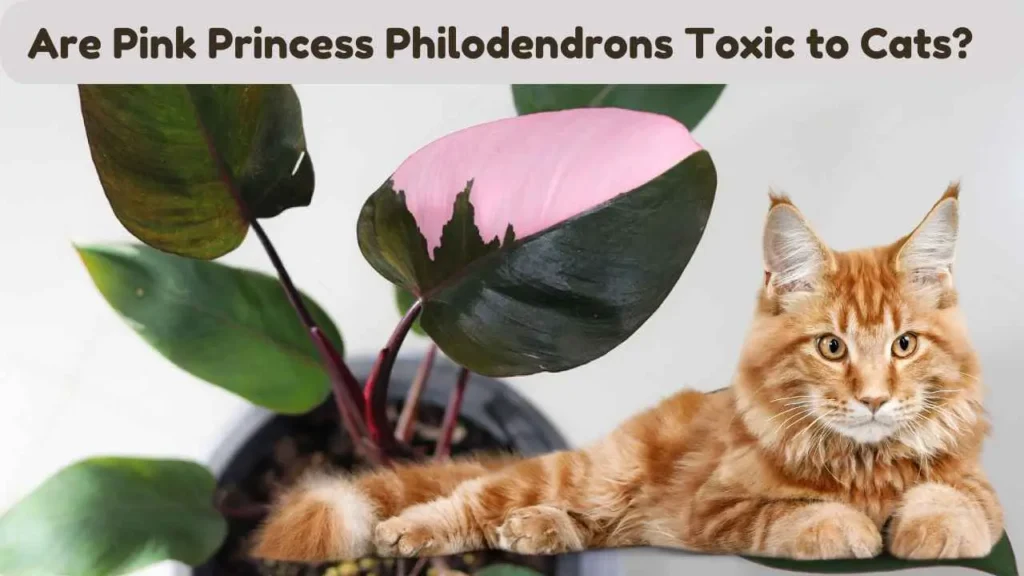Table of Contents
ToggleWhen I first saw the Pink Princess Philodendron, I was amazed by its unique colors. The bright pink patches on the deep green leaves were like nothing I had ever seen. I had been collecting houseplants for a while, but this one felt special. It looked almost royal. So, when I found a large Pink Princess Philodendron at a local nursery, I knew I had to buy it. I didn’t realize then that taking care of a large Pink Princess Philodendron would be very different from my other plants.
Bringing home the large Pink Princess Philodendron was exciting but also a bit scary. I wanted to make sure it stayed healthy and kept its beautiful colors. But I quickly learned that this plant had special needs, unlike the others in my collection. In this article, I’ll share my experiences with the large Pink Princess Philodendron. I’ll also give you some expert tips to help you care for yours. Whether you’re an experienced plant owner or new to aroids, I hope my story will help you keep your large Pink Princess Philodendron healthy and bright.
Understanding the Large Pink Princess Philodendron
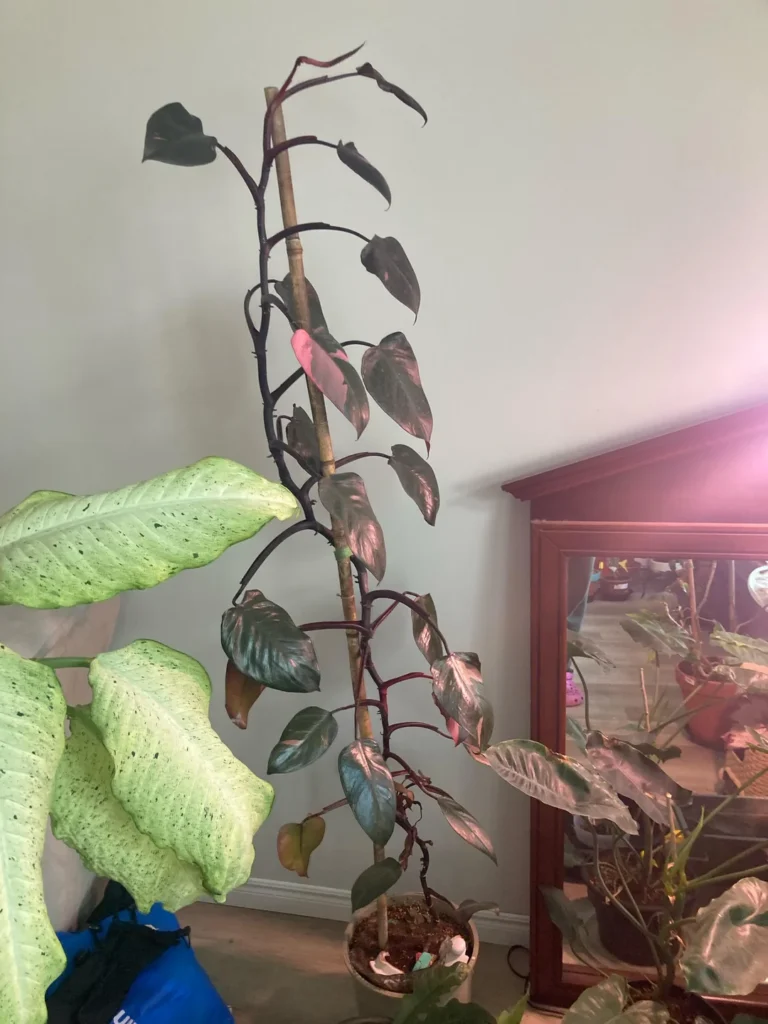
Before we get into care tips, it’s important to know why the large Pink Princess Philodendron is so special. This isn’t just another houseplant; it’s a showstopper. The Pink Princess comes from the tropical areas of South America. It’s a type of Philodendron erubescens, famous for its dark green or almost black leaves with pink patches. The large Pink Princess Philodendron can grow several feet tall, with leaves up to 9 inches long.
What makes it even more unique is its rarity. True Pink Princess Philodendrons are hard to find, which adds to their charm. However, the features that make this plant so appealing also need special care. For example, the pink patches depend on getting the right amount of light. Also, because of its size, this plant has different needs than smaller ones.
Creating the Ideal Environment for a Large Pink Princess Philodendron
One of the first things I learned was that the right environment is crucial for a large Pink Princess Philodendron. Unlike smaller houseplants, this one is more demanding.
Light Requirements
At first, I placed my Pink Princess near a north-facing window. I thought it would get enough light without burning. But after a few weeks, the pink color faded, and new leaves were mostly green. I realized it needed bright, indirect light to keep its pink color. I moved it near an east-facing window where it gets morning sun. The pink hues became stronger, and the plant looked healthier.
If you’re having trouble keeping the pink color, check your light. If natural light is limited, try using a grow light. Just avoid direct afternoon sunlight, as it can burn the leaves, especially the pink parts.
Temperature and Humidity
I live in an area with changing temperatures, so I had to be careful with my plant’s environment. The Pink Princess likes temperatures between 65°F and 80°F, which is close to most indoor settings. But in winter, when the heating was on, the air got too dry. The leaf edges started to curl, showing that the humidity was too low.
To fix this, I bought a small humidifier and put it near the plant. I also grouped it with other plants that like humidity. This created a microenvironment similar to its natural habitat. You can also use a pebble tray with water under the pot or mist the leaves, but don’t overdo it. Too much moisture can cause fungus.
Air Circulation
Good air circulation is also important. While Pink Princess Philodendrons like humidity, they need airflow to avoid fungus. I made the mistake of putting mine in a corner with little ventilation, and mildew started to form on the leaves. Now, I keep a small fan in the room, not directly on the plant, but close enough to move the air. This simple change helped keep the plant healthy.]
Watering and Soil Requirements
Watering a large Pink Princess Philodendron was a challenge for me. It’s easy to overwater or underwater, and both can cause problems.
Watering Guidelines
I learned that simply watering when the top inch of soil is dry isn’t always enough for a large Pink Princess. The plant’s size affects how it uses water, and the soil can dry out at different rates based on pot size and environment. After some trial and error, I found that sticking to a regular schedule worked best. During spring and summer, I water my Pink Princess every 7-10 days, adjusting based on the soil’s moisture.
It’s important to water thoroughly and let the excess drain out, but don’t let the plant sit in water. Overwatering can cause root rot, a common issue with this plant. In winter, I water less, about once every 2-3 weeks, since the plant grows slower and needs less moisture.
Soil Mix
Choosing the right soil mix was also important. I started with regular potting mix, but it didn’t drain well enough, leading to soggy roots. I switched to a well-draining, chunky mix with orchid bark, perlite, and peat. This mix gives the roots air while holding enough moisture to keep the plant healthy.
If you’re making your own mix, aim for a balance between moisture and drainage. The large Pink Princess Philodendron does best in soil that lets air circulate around the roots, which helps prevent root rot.
Potting and Repotting
When I first got my large Pink Princess Philodendron, it was in a small pot. It became root-bound after a few months, which can slow its growth. Repotting was needed, but it’s important to be careful. Choose a pot that is just a little bigger than the current one, as too much space can cause the soil to hold too much water.
During repotting, handle the roots gently and try not to disturb them too much. This plant doesn’t like being repotted often, so only do this every 2-3 years, or when you see roots coming out of the drainage holes.
Feeding and Fertilizing
I didn’t focus on fertilizing at first. I thought regular watering and good light would be enough for my large Pink Princess Philodendron to grow well. But I soon realized I was wrong. Fertilizing is important for keeping its bright color and helping it grow strong.
Fertilization Schedule
I began using a balanced, water-soluble fertilizer with a 20-20-20 NPK ratio every 4-6 weeks during the growing season. This made a big difference in the plant’s health and color. But be careful not to over-fertilize, as this can harm the plant. To avoid this, I dilute the fertilizer to half strength.
In winter, I cut back fertilizing to once every 2-3 months because the plant grows more slowly and needs fewer nutrients.
Signs of Nutrient Deficiency
One time, I noticed the leaves on my large Pink Princess Philodendron turning yellow. This can mean the plant isn’t getting enough nutrients. It’s important to watch the leaves for any color or texture changes, as these can show what the plant needs. In my case, the yellowing was from a lack of nitrogen, so I increased the nitrogen in the fertilizer a little.
Also, look out for other signs like slow growth or pale leaves. If you see these, adjust your fertilizing routine.
Organic vs. Synthetic Fertilizers
I’ve tried both organic and synthetic fertilizers, and each has its own benefits. Organic fertilizers, like worm castings or compost tea, release nutrients slowly and improve soil health over time. Synthetic fertilizers give nutrients quickly and are more precise in their NPK ratios.
For my large Pink Princess Philodendron, I use both. I apply synthetic fertilizer during the growing season and add organic fertilizers in between. This mix works well, giving the plant the nutrients it needs without overwhelming it.
Pruning and Maintenance
Watching a large Pink Princess Philodendron grow is rewarding, but it also means regular care is needed to keep it looking good.
Pruning Tips
Pruning helps control the shape and size of your Pink Princess Philodendron. I usually prune mine in early spring when the growing season starts. This lets me remove dead or damaged leaves and encourages new growth.
Always use clean, sharp scissors when pruning to avoid spreading disease. Cut just above a leaf node to encourage new branches. If your Pink Princess looks leggy, pruning can help make it fuller and bushier.
Cleaning the Leaves
The large leaves can gather dust, which not only looks bad but also blocks photosynthesis. I clean the leaves every few weeks with a damp, soft cloth. Be gentle, especially on the pink parts, as they are more delicate.
Cleaning the leaves improves how the plant looks and also lets you check for pests or diseases.
Pest Control
Despite my efforts, my large Pink Princess Philodendron once got spider mites. These tiny pests are hard to see at first, but they multiply quickly if not controlled. I got rid of them by regularly spraying the plant with a mix of water and neem oil.
It’s important to watch for pests like spider mites, scale, and aphids. Regularly inspect your plant and use natural pest control methods to stop a small issue from becoming a big problem.
Propagation Tips
One of the best parts of owning a large Pink Princess Philodendron is the chance to propagate it. I’ve done this a few times, and it’s always satisfying.
How to Propagate a Large Pink Princess Philodendron
Spring or early summer is the best time to propagate because the plant is growing actively. There are several ways to do this, but I’ve had the most success with stem cuttings.
To propagate, choose a healthy stem with at least two nodes. Cut just below the lower node. Remove the lower leaves, leaving a couple at the top. I prefer to start the cutting in water to encourage roots before moving it to soil. You can also plant it directly in soil, but water allows you to watch the roots develop.
Ensuring Successful Propagation
Once the cutting grows roots, usually in a few weeks, plant it in a small pot with well-draining soil. Keep the soil moist but not too wet. Place the cutting in bright, indirect light. It might take some time for the cutting to adjust, so be patient.
Using a rooting hormone can help, especially if you’re planting directly in soil.
Displaying and Styling Your Large Pink Princess Philodendron
A large Pink Princess Philodendron isn’t just a plant; it’s a piece of living art that can brighten up any space.
Showcasing Your Large Pink Princess Philodendron
Finding the perfect spot for my large Pink Princess was a challenge. I finally chose a large decorative pot on a plant stand near an east-facing window. This spot shows off its beauty and gives it the right amount of light.
You can also display your Pink Princess in a hanging basket or on a plant shelf. Just make sure it’s in a spot where it can grow well and where the leaves won’t be damaged by frequent touching.
Pairing with Other Plants
I enjoy creating plant clusters, and the large Pink Princess pairs nicely with other aroids, like Monstera or Philodendron Brasil. The mix of green and pink shades adds depth to the display.
When grouping plants, consider each plant’s needs. Tropical plants with similar light and humidity requirements will be good companions for your Pink Princess.
Troubleshooting Common Issues
Even with great care, you might face some problems with your large Pink Princess Philodendron. Here are some common issues and how to fix them.
Yellowing Leaves
Yellowing leaves can mean different things, like overwatering, underwatering, or not enough nutrients. I’ve dealt with this a few times. Usually, adjusting the watering schedule or adding a bit more fertilizer solves the problem.
If only the lower leaves are yellowing, it might just be the plant shedding old leaves naturally. But if the yellowing is all over the plant, you should check your care routine.
Loss of Variegation
One of the most frustrating things is when your large Pink Princess Philodendron starts losing its pink color. This can happen if the plant isn’t getting enough light. If you see this, try moving the plant to a brighter spot with indirect light. Sometimes, trimming the green leaves can help bring back the pink color.
READ MORE: Why is My Pink Princess Philodendron Losing Variegation? Causes and Solutions
Root Rot and Soil Problems
Root rot is a common problem, especially if the plant is overwatered or in soil that doesn’t drain well. I had to deal with this once, and it wasn’t easy. The key is to catch it early. If you see the leaves wilting or the soil smells bad, check the roots.
Healthy roots should be white and firm. Rotten roots will be brown and mushy. If you find rotten roots, cut them off and repot the plant in fresh, well-draining soil. Be sure to change your watering habits to prevent it from happening again.
Conclusion
Caring for a large Pink Princess Philodendron has been one of the most rewarding parts of my indoor gardening journey. This plant is stunning, but it needs more attention than most houseplants. Finding the right light, watering correctly, and feeding it properly have all taught me valuable lessons about plant care and patience.
If you have a large Pink Princess Philodendron, be ready to learn. Pay attention to what it needs, adjust as necessary, and don’t hesitate to try different care methods. The result—a healthy, colorful plant with beautiful pink leaves—is worth the effort.
Now that you have these tips, put them to use. Check your Pink Princess, make any needed changes, and watch it grow. Remember, every plant is different, so what works for mine might need some tweaks for yours. Enjoy the process, and happy growing!
FAQs
How often should I water my large Pink Princess Philodendron?
Water your Pink Princess Philodendron when the top 2 inches of soil are dry. This is usually every 7-10 days during the growing season and less often in winter. Water thoroughly, let the excess drain out, and don’t let the plant sit in water.
Why is my Pink Princess Philodendron losing its pink color?
The loss of pink color is often due to low light. Place your plant in bright, indirect light. Moving it closer to a window or using a grow light can bring the pink color back.
What fertilizer should I use for my Pink Princess Philodendron?
Use a balanced, water-soluble fertilizer with a 20-20-20 ratio every 4-6 weeks during the growing season. You can also add organic options like worm castings for extra nutrients.
How can I increase humidity for my Pink Princess Philodendron?
To raise humidity, put a humidifier near your plant, use a pebble tray with water under the pot, or group it with other plants. Regular misting can also help, but don’t overdo it.
Related
Discover more from Pink Philodendron
Subscribe to get the latest posts sent to your email.

